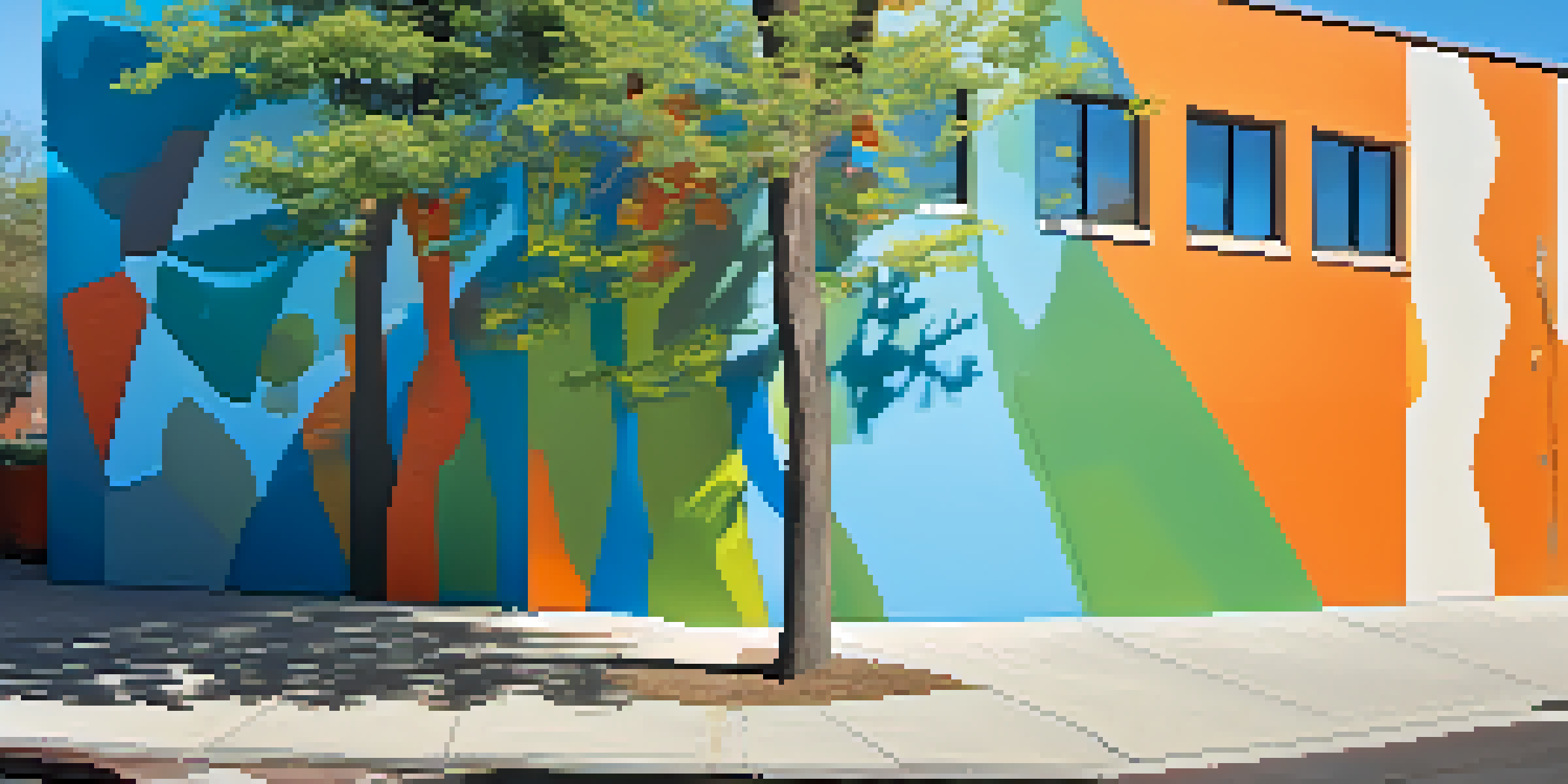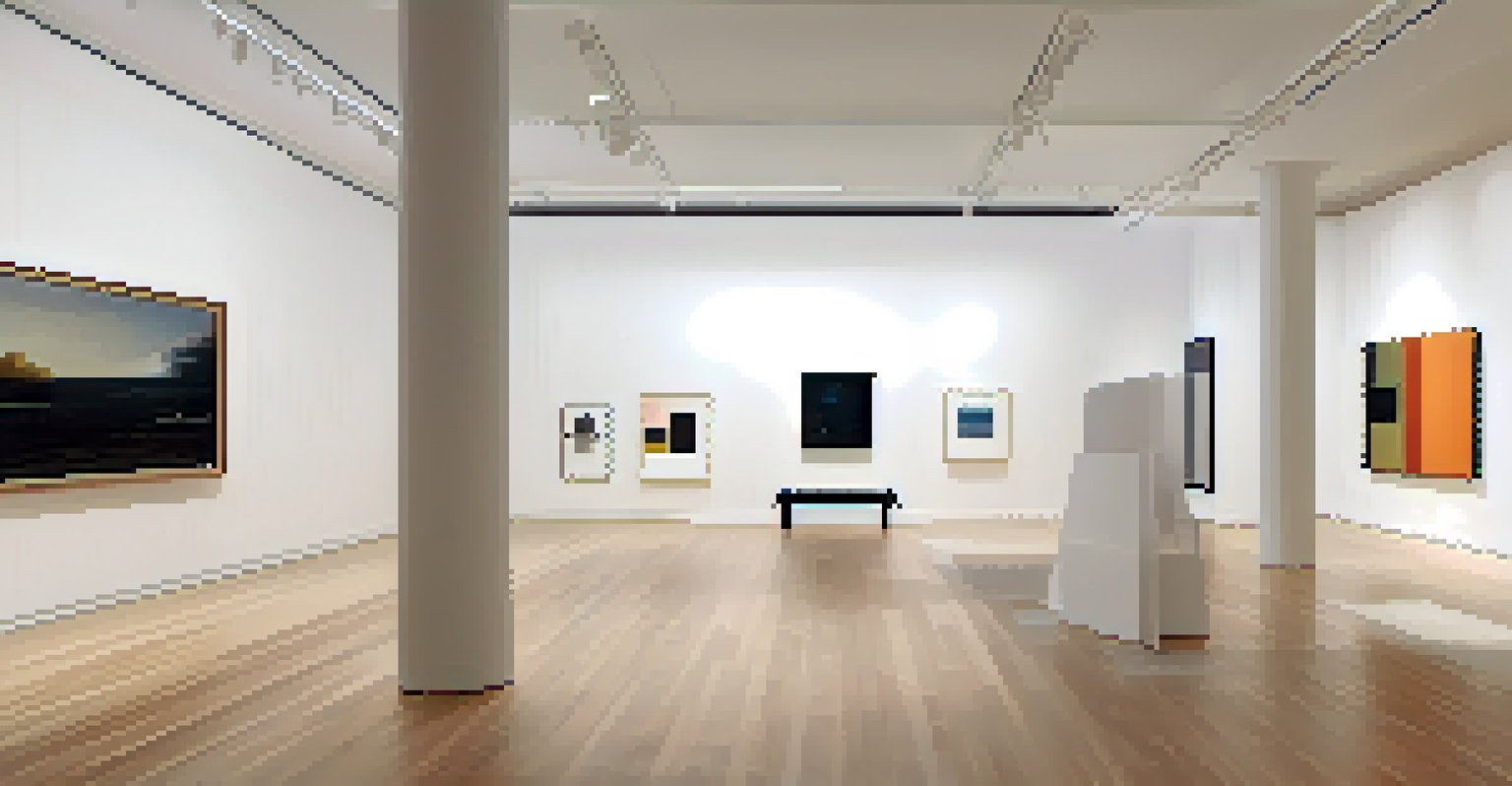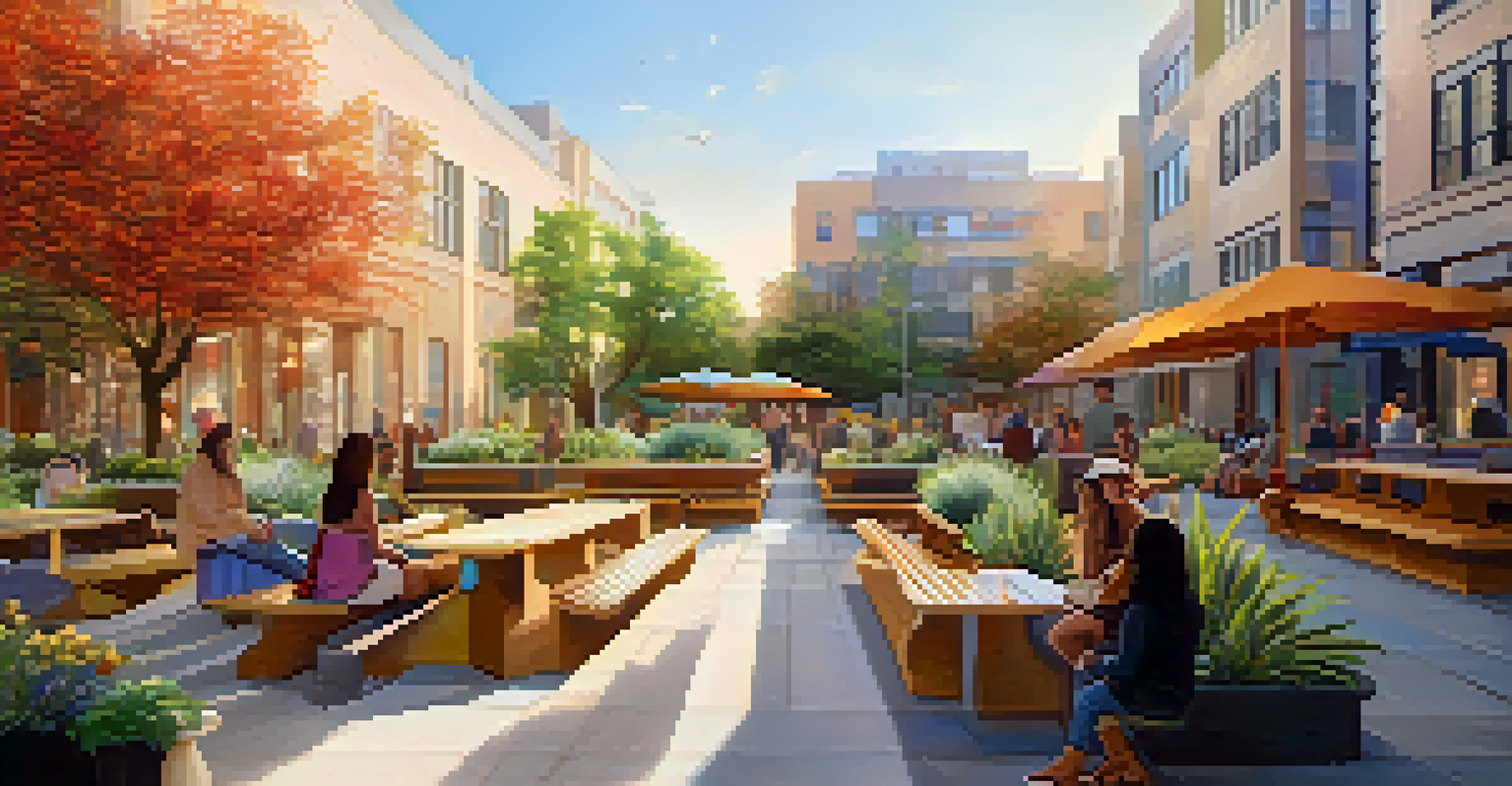Collaboration in Art: Painters and Architects Creating Spaces

The Beauty of Collaboration: Art Meets Architecture
Collaboration in art, particularly between painters and architects, creates spaces that are not only functional but also visually stunning. This partnership allows for a unique blending of skills and perspectives, resulting in environments that inspire and uplift. Imagine walking through a building where the walls are adorned with vibrant murals that reflect the essence of the space; this is the magic that unfolds when these two disciplines unite.
The best artist has no conception that a marble block does not contain within itself.
Painters add a layer of artistic expression that can transform a mundane structure into a gallery of creativity. Their ability to manipulate color, form, and texture enhances the architectural features, making the entire space feel alive. Conversely, architects provide the canvas—designing the bones of the structure to ensure that the artist's vision can be fully realized within a coherent and functional framework.
This synergy not only enriches the aesthetics of a space but also influences the way individuals interact with their environment. When painters and architects collaborate, they create a dialogue between art and structure, resulting in spaces that tell a story and evoke emotion, fostering a deeper connection between people and their surroundings.
Historical Context: Art and Architecture Through the Ages
The relationship between art and architecture is not a new phenomenon; it has roots that stretch back to ancient civilizations. From the grand murals of Egyptian tombs to the intricate frescoes of Renaissance cathedrals, history is steeped in examples where painters and architects worked hand in hand. These collaborations were often driven by a shared vision of creating not just buildings, but immersive experiences.

During the Baroque period, for instance, artists like Gian Lorenzo Bernini transformed the spaces of churches and palaces with their dramatic ceiling paintings and sculptural elements. This era showcased how the fusion of visual arts and architecture could create an atmosphere of awe and reverence, demonstrating the powerful impact of collaboration.
Collaboration Enhances Spaces
The partnership between painters and architects transforms functional environments into visually stunning spaces that inspire and uplift.
Today, this historical partnership continues to evolve, as modern artists and architects draw inspiration from these age-old practices. They strive to capture the spirit of their communities through innovative designs and artistic expressions, reminding us that the blending of these two fields has always been integral to cultural and aesthetic progression.
Modern Examples: Iconic Collaborations in Urban Spaces
In contemporary urban landscapes, we see numerous examples of painters and architects collaborating to create iconic spaces. The High Line in New York City is a prime example, where landscape architecture meets public art. As visitors stroll along the elevated park, they encounter murals and installations that enhance the experience, proving how art can elevate public spaces.
Architecture is the learned game, correct and magnificent, of forms assembled in the light.
Another notable case is the collaboration between architect Frank Gehry and artist Claes Oldenburg at the Guggenheim Museum Bilbao. The building itself is a work of art, while Oldenburg’s whimsical sculptures around the museum complement Gehry's bold design, creating a harmonious blend of structure and artistic expression. This partnership has not only transformed the city but has also become a landmark for modern architecture and art.
These collaborations showcase how vibrant art installations can breathe life into architectural projects, creating spaces that invite exploration and engagement. Such partnerships not only enhance the aesthetic appeal but also contribute to a sense of community and identity within urban environments.
The Role of Technology in Artistic Collaborations
As technology advances, the collaboration between painters and architects becomes more dynamic and exciting. Digital tools allow artists to visualize their concepts in 3D, enabling them to work closely with architects to integrate art seamlessly into architectural plans. This technological synergy opens up new possibilities for creativity that were previously unimaginable.
For instance, augmented reality (AR) can allow both artists and architects to experience how a mural will look in a specific space before it’s even painted. This technology fosters an iterative design process, where feedback can be instantly shared, leading to more refined and cohesive outcomes. It also allows for greater experimentation, pushing the boundaries of traditional art forms and architectural design.
Art Reflects Community Identity
Artistic collaborations can encapsulate the history and values of a community, making projects culturally relevant and fostering a sense of belonging.
Moreover, technology facilitates collaborations across geographical boundaries. Artists and architects can now work together virtually, sharing ideas and designs in real time, regardless of their location. This global connectivity enriches the collaborative process, bringing diverse perspectives and styles into the mix, ultimately resulting in more innovative and inclusive spaces.
Cultural Significance: Reflecting Community Identity
Artistic collaborations between painters and architects often serve as reflections of the communities in which they reside. These projects can encapsulate the history, values, and aspirations of a place, making them a vital part of cultural identity. When local artists collaborate with architects, they infuse their work with elements that resonate deeply with the community, fostering a sense of belonging.
For example, murals depicting local heritage or cultural narratives can transform public spaces into canvases that celebrate community stories. This not only beautifies the environment but also instills pride among residents. It allows communities to see themselves in the spaces they inhabit, creating a powerful connection between art, architecture, and identity.
By engaging with local artists, architects can ensure that their designs are not just aesthetically pleasing but also culturally relevant. This collaboration encourages a dialogue about the importance of heritage and the role of art in shaping communal spaces, ultimately enriching the urban landscape and enhancing the quality of life for all.
The Future of Collaboration: Trends to Watch
Looking ahead, the future of collaboration between painters and architects is bright and full of potential. As societal values shift towards sustainability and inclusivity, we are likely to see more projects that prioritize community engagement and environmental responsibility. This trend encourages artists and architects to work together in ways that not only enhance the aesthetic appeal but also support a healthier planet.
Moreover, the rise of public art initiatives indicates a growing recognition of the importance of art in urban planning. Cities are increasingly commissioning artists to collaborate with architects on projects that bring art into public spaces, making creativity accessible to all. This shift fosters a sense of ownership and pride among community members, as they see their stories and experiences reflected in the architecture around them.
Future Trends in Art and Design
Future collaborations will increasingly focus on sustainability and inclusivity, blending traditional techniques with modern technology to enhance urban environments.
As collaboration continues to evolve, we can anticipate innovative approaches that blend traditional techniques with modern technology. This will lead to exciting new forms of expression and design, making the partnership between painters and architects an ever-growing force in shaping our environments.
Conclusion: The Enduring Power of Artistic Collaboration
In conclusion, the collaboration between painters and architects is a powerful force that shapes our environments in meaningful ways. This partnership not only enhances the aesthetics of our spaces but also fosters a deeper connection to our communities and cultural identities. As we reflect on the past and look to the future, it's clear that the blending of these two disciplines will continue to inspire and innovate.
The stories told through collaborative art and architecture enrich our lives, reminding us of the importance of creativity and expression in our built environments. Each project becomes a testament to the unique interplay between structure and artistry, inviting us to engage with our surroundings in new and exciting ways.

As we embrace this collaborative spirit, let us celebrate the incredible potential that arises when painters and architects unite, transforming spaces into vibrant reflections of our shared humanity.